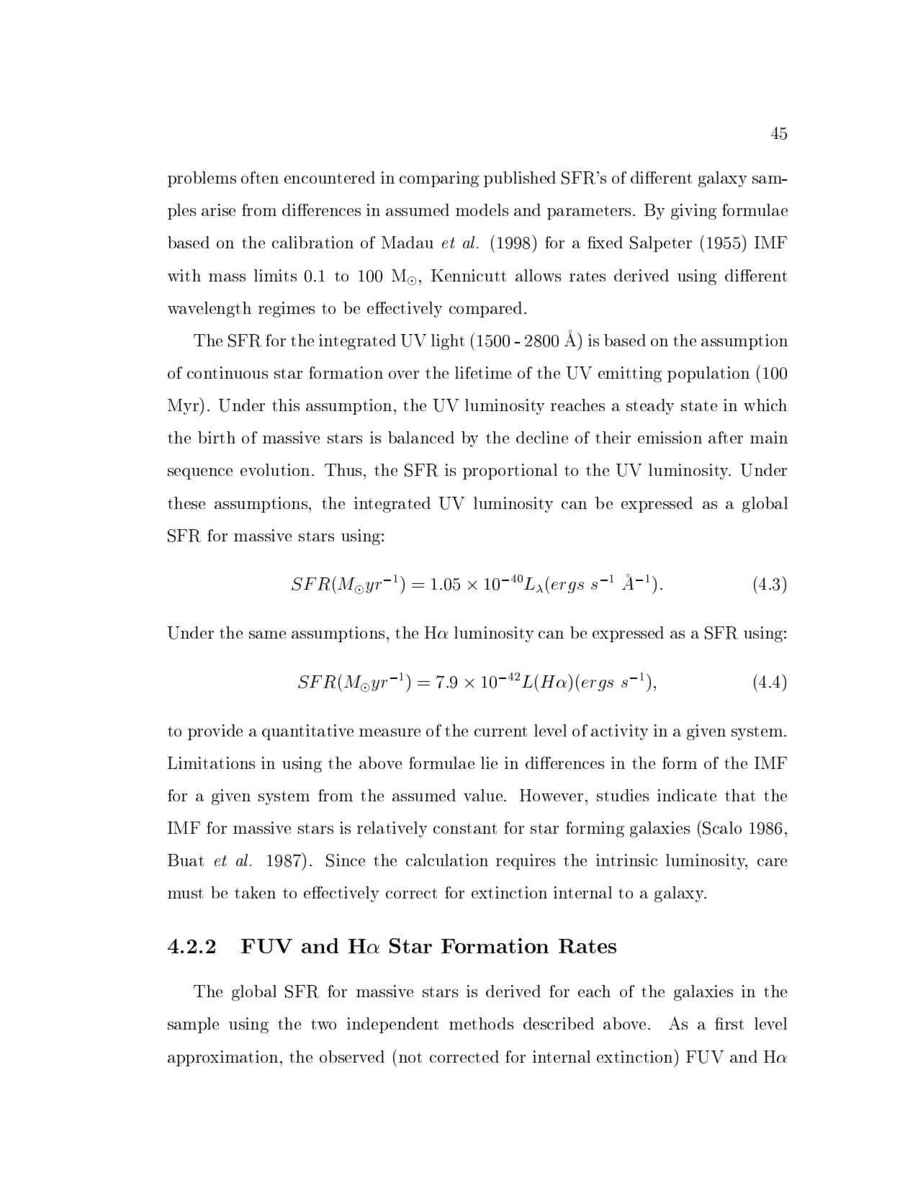
45
problems often encountered in comparing published SFR's of di erent galaxy sam-
ples arise from di erences in assumed models and parameters. By giving formulae
based on the calibration of Madau
et
al.
1998 for a xed Salpeter 1955 IMF
with mass limits 0.1 to 100 M , Kennicutt allows rates derived using di erent
wavelength regimes to be e ectively compared.
The SFR for the integrated UV light 1500 - 2800 A is based on the assumption
of continuous star formation over the lifetime of the UV emitting population 100
Myr. Under this assumption, the UV luminosity reaches a steady state in which
the birth of massive stars is balanced by the decline of their emission after main
sequence evolution. Thus, the SFR is proportional to the UV luminosity. Under
these assumptions, the integrated UV luminosity can be expressed as a global
SFR for massive stars using:
S
F
R
M
y
r
,1
= 1
:
05
10
,40
L
er
g
s
s
,1
A
,1
:
4.3
Under the same assumptions, the H luminosity can be expressed as a SFR using:
S
F
R
M
y
r
,1
= 7
:
9
10
,42
L
H
er
g
s
s
,1
;
4.4
to provide a quantitative measure of the current level of activity in a given system.
Limitations in using the above formulae lie in di erences in the form of the IMF
for a given system from the assumed value. However, studies indicate that the
IMF for massive stars is relatively constant for star forming galaxies Scalo 1986,
Buat
et
al.
1987. Since the calculation requires the intrinsic luminosity, care
must be taken to e ectively correct for extinction internal to a galaxy.
4.2.2 FUV and H Star Formation Rates
The global SFR for massive stars is derived for each of the galaxies in the
sample using the two independent methods described above. As a rst level
approximation, the observed not corrected for internal extinction FUV and H
